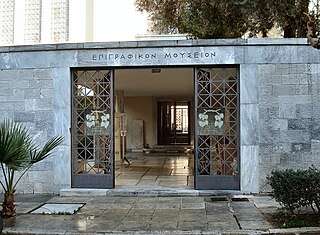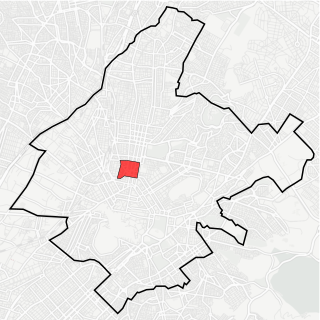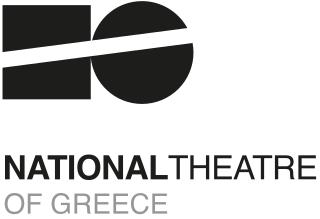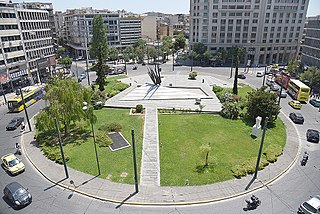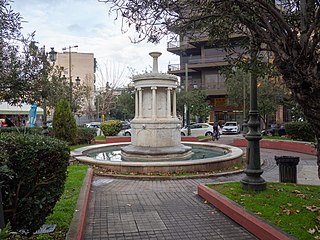Self-guided Sightseeing Tour #12 in Athens, Greece
Legend
Guided Free Walking Tours
Book free guided walking tours in Athens.
Guided Sightseeing Tours
Book guided sightseeing tours and activities in Athens.
Tour Facts
3.4 km
93 m
Experience Athens in Greece in a whole new way with our free self-guided sightseeing tour. This site not only offers you practical information and insider tips, but also a rich variety of activities and sights you shouldn't miss. Whether you love art and culture, want to explore historical sites or simply want to experience the vibrant atmosphere of a lively city - you'll find everything you need for your personal adventure here.
Activities in AthensIndividual Sights in AthensSight 1: Μνημείο πεσόντων του Πολυτεχνείου
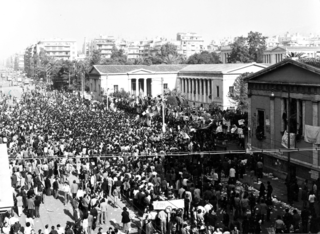
The Athens Polytechnic uprising occurred in November 1973 as a massive student demonstration of popular rejection of the Greek military junta of 1967–1974. It began on 14 November 1973, escalated to an open anti-junta revolt, and ended in bloodshed in the early morning of 17 November after a series of events starting with a tank crashing through the gates of the Athens Polytechnic.
Sight 2: Epigraphical Museum
The Epigraphical Museum of Athens, Greece, is unique in Greece and the largest of its kind in the world. Its collection comprises 14,078, mostly Greek, inscriptions, which cover the period from early historical times to the Late Roman period, primarily in Greece. It is situated in the south wing of the National Archaeological Museum of Athens. It comprises an internal and external courtyard (atrium), a lobby, eleven rooms, a large hypostyle Pi-shaped corridor, a gallery, offices, a laboratory for the conservation of inscribed stone monuments and lavatories. Only the courtyards, lobby and four rooms are open to the public, while the rest is reserved for researchers. A full photographic archive of the collection is being assembled for future visitors.
Sight 3: Πλατεία Βάθης
Vathi is a neighborhood of the center of Athens. It is located north of Athens' downtown and is part of the first suburb of the city. The center of the neighborhood is Vathis Square.
Sight 4: National Theatre
The National Theatre of Greece is based in Athens, Greece.
Sight 5: Πλατεία Καραϊσκάκη
Karaiskaki Square is an important urban hub of Athens. It is located 500 meters west of Omonia Square, with which it communicates through Agiou Konstantinou Street. Karaiskaki Square is located in the district of Metaxourgeio and below it is bounded the homonymous station of metro line 2. As the square is the largest and most famous of the district, many mistakenly call it Metaxourgeio Square, which is actually two blocks to the west, at the junction of Lenorman and Achilleos streets.
Sight 6: Πλατεία Μεταξουργείου
Metaxourgio Square is a square in Athens and the most historic of the homonymous district. It is located at the intersection of Lenorman and Achilles streets, about the center of the district. It is important to note for those who are not familiar with the city of Athens that Metaxourgio Square should not be confused with Karaiskakis Square, the largest and most famous in the area where the metro station is located. The square became known by this name from a silk fabric plant founded there in 1835, which over time remained for the whole area. The plant was installed at the unfinished mansion of Prince George Kantakouzenos, which still exists today on streets of Alexandrou, Myllerou and Yatrakou. From Metaxourgio Square, the carnival attractions of the old city of Athens, such as the Gaitanaki, also started. Once the square was twice as high as today. But the widening of Achilles Street, which was a small narrow road, with the aim of communicating Athens with the Athens -Corinth Highway, resulted in about half the square disappearing.
Sight 7: Ταινιοθήκη Της Ελλάδος
The Greek Film Archive is a nonprofit film archive organization located in Athens, Greece, whose goal is to produce and spread Greek and international films. It's a part of International Federation of Film Archives and a founding member of the European Film Gateway. It is also co-operating with the Thessaloniki International Film Festival.
Share
How likely are you to recommend us?
Disclaimer Please be aware of your surroundings and do not enter private property. We are not liable for any damages that occur during the tours.
GPX-Download For navigation apps and GPS devices you can download the tour as a GPX file.
